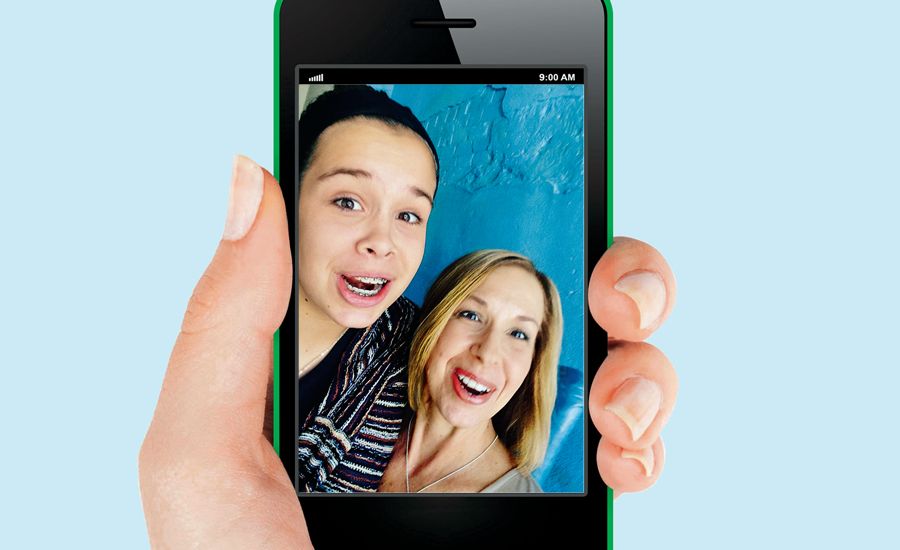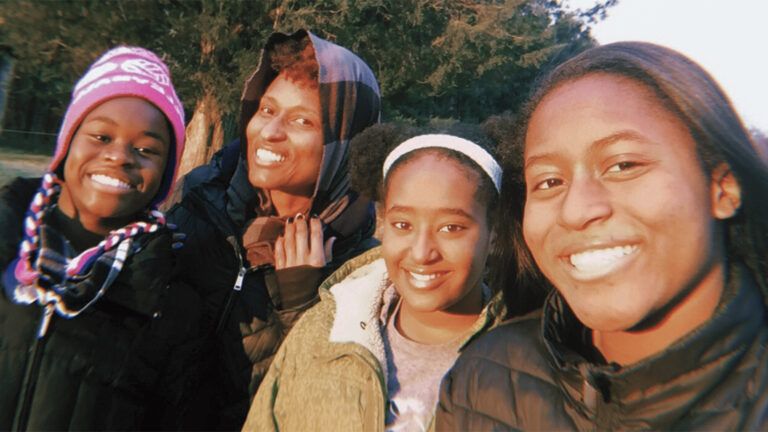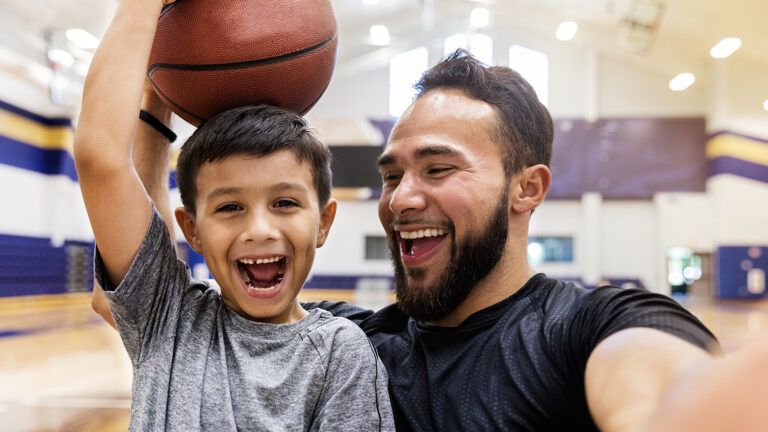Slam. Snap. Zip. The car door shut. The seatbelt got buckled. The backpack opened. By now I knew what I’d hear next.
My fifth grader, Micah, held her iPhone—released from confinement in her backpack—in the air at arm’s length, tilted her head and pursed her lips.
Click.
The unmistakable sound of the camera shutter. Micah’s thumbs flew across the keyboard.
“What are you doing?” I asked.
“Sending Lexi a selfie,” she mumbled, eyes glued to the screen.
“You were just talking to her ten seconds ago when I picked you up,” I said. “Do you really need to send her a picture of yourself? We haven’t even left the parking lot yet!”
Micah sighed. “Mom, you just don’t get it!”
She was right about that. Selfie was short for self-portrait, but if I had to go by what my daughter had been doing since my husband, Michael, and I got her a cell phone, I’d say what it really meant was self-centered.
What happened to the days we’d talk on the car ride home? Micah used to open up to me faster than she could send a text. “You’re not going to believe this, Mom,” she’d say, then fill me in on her day at school. Sometimes we’d turn up the radio and sing at the top of our lungs. Talking. Sharing. Connecting. I missed that.
Part of me still couldn’t believe that we’d even gotten her a phone. She was only 11! But friends with older kids had warned me. “A lot of students have them in fifth grade,” one mom said.
“I got my daughter a cell phone because her friends were using theirs to make plans and leaving her out,” another added.
That Christmas we broke down and gave Micah the iPhone. It was the only thing she wanted (and, because of the expense, it was one of the few presents she received!).
It was convenient, I had to admit. I could text Micah if I was going to be late picking her up from soccer practice, or if she browsed a different aisle from me at the grocery store. We set parental locks. Limited her use. Monitored all her activity.
Didn’t matter. Micah would’ve had that phone permanently attached to her hand if she could. She and her friends spent more time texting and uploading selfies to Instagram than they did actually talking to each other. What was that about?
They were connecting, I guess, but only on the most superficial, fleeting level. Not like the long conversations I used to have with my friends when I was in middle school.
I’d grab the “Harvest Yellow” Trimline phone off the kitchen wall and stretch the cord its full six-foot length into the coat closet. Then I would shut the door and talk for hours in privacy. I’d spill everything to my best friend. She knew my deepest feelings, and I knew hers. Now that was connecting.
How could text messages—all cryptic abbreviations and cute little “emoji” images—convey real emotion? I wished that my best friend and I had had FaceTime to video chat with each other. We would have bonded even deeper, if that was possible. All Micah and her friends seemed to use it for was making funny faces at each other. Why was their generation so consumed with themselves?
I pulled into the garage. Micah grudgingly handed over her iPhone. She’d get it back once she’d finished her homework. I set it on the kitchen counter while I made dinner. Bzz. Bzz.
Incoming texts.
finish ur homework yet?
sup?
omg, adorbs!
Enough! I reached for the button to shut the thing off. That’s when I noticed a few Instagram notifications. Friends had “liked” the selfie Micah posted from the car.
I scrolled through the kids’ profiles. They were filled with silly shots of themselves: mouths open, tongues sticking out, parts of their faces out of the picture. I shook my head.
When I was their age, I wanted to look my best in photos. Big smile. Perfect hair. If the camera caught me blinking, I was mortified. But Micah and her friends posted their “fails” for all to see and laugh at.
Maybe I’ll never get it, I thought, powering off the phone. The next morning on the drive to school, I reminded Micah that I was flying to New York that day for a workshop and I’d be gone all weekend. I doubted she heard me. Right arm extended, she held her phone horizontally. “Happy Friday!” she said—not to me but to the camera. Click.
I dropped her off and headed to the airport. At the gate, I checked Micah’s Instagram feed and saw her latest selfie. There I was in the background, in the driver’s seat. Ugh. Not the most flattering angle.
There were weather delays. Late afternoon, I finally made it to LaGuardia. I called home, but no one answered. Micah would be out of school by now. I texted her. Hey! What are you doing?
Her reply came instantly. Mommy I miss u lots! Take a selfie for me?
Me? Take a selfie? No way!
I started to punch in her number so we could talk, but another message from her popped up. A selfie, of course. Her forehead was cut off. She wasn’t smiling. And she’d used some sort of filter to dull the colors. Why such a sad picture?
Bzz. Did I really hear that or was it only in my head, like a text message from above? Micah didn’t look happy because she wasn’t. She missed me! Not all those selfies were self-obsession. Some were self-expression. She was sharing her feelings, her God-given personality. Connecting. If I wanted to talk to her—really bond with her—I’d have to do the same.
I stuck out my arm and took a picture. My face looked huge! I tried again, this time with my forehead and one eye cropped out, like I’d seen Micah do. Click. I looked ridiculous. I hit Send anyway.
Immediately, I got a line of emojis, yellow smiley faces laughing so hard tears streamed down their cheeks. O my gossshhhh!!! Micah wrote.
FaceTime chimed. I hit Accept. There, on my phone’s screen, was my daughter’s face. Only now she was smiling.
“You did it, Mom!” Micah said, breaking into giggles.
I had to laugh too. “It’s harder than it looks,” I said. “I think you need to give me a lesson.”
“Hold the camera a little higher than your face. It makes your eyes look bigger and your chin more pointed,” she instructed. “And find something in the background that shows where you are.”
I walked over to a Welcome to New York sign. I stretched my arm upward and tilted my head.
Click.
The unmistakable sound of a mom finally getting it.
Download your FREE ebook, Rediscover the Power of Positive Thinking, with Norman Vincent Peale.





